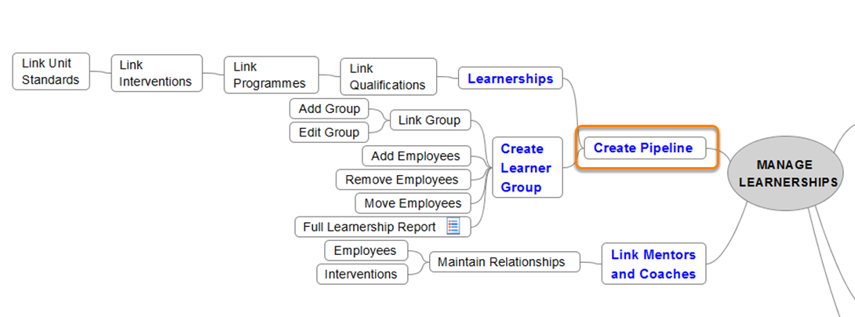The Advantages of LMS Learnership for Upskilling and Reskilling Workers
The Advantages of LMS Learnership for Upskilling and Reskilling Workers
Blog Article
Strategic Implementation of LMS Learnership Programs for Sustainable Staff Member Advancement
In the world of workforce development, the tactical implementation of Understanding Management System (LMS) learnership programs stands as a cornerstone for promoting sustainable employee growth within companies. As the landscape of expert discovering evolves, companies are increasingly transforming to digital systems to cultivate the abilities and competencies of their labor force. The plain adoption of an LMS is but the initial step in an intricate trip in the direction of achieving enduring worker growth. By delving right into the intricacies of creating and performing LMS learnership programs with a strategic lens, companies can unlock a wide variety of benefits that not just enhance employee abilities yet likewise contribute to the total sustainability and success of business.
Benefits of LMS Learnership Programs
LMS learnership programs use a wide variety of advantages for both staff members and organizations looking for continuous specialist advancement. Additionally, these programs commonly offer a wide range of courses and sources, enabling workers to acquire brand-new abilities and knowledge pertinent to their roles or occupation ambitions.
Furthermore, LMS learnership programs advertise a culture of constant discovering within organizations. By motivating workers to upskill and remain updated on market patterns, companies can improve their overall competitiveness and innovation abilities. This focus on knowing and growth also enhances employee morale and involvement, causing higher retention prices and boosted work contentment. On the whole, the benefits of LMS learnership programs extend beyond individual growth to include the alternative advancement of both employees and the companies they offer.

Trick Methods for Application
Building upon the fundamental advantages highlighted earlier, reliable execution of learnership programs needs strategic planning and execution to optimize their influence on employee growth and organizational development. One key method for successful application is lining up the learnership program with the organization's total goals and objectives. By ensuring that the program's web content and structure remain in sync with the business's critical direction, workers are most likely to see the significance of their engagement and how it adds to the bigger picture.
One more crucial strategy is to protect buy-in from leading administration and essential stakeholders. Management support not just gives the necessary sources and financing yet additionally sends a message to workers regarding the program's relevance. Additionally, producing a durable communication plan that describes the program's framework, advantages, and assumptions aids in handling individual and stakeholder assumptions, fostering interaction, and preserving openness throughout the application process. Normal tracking and examination of the program's effectiveness are likewise vital to make timely changes and ensure its continued success.
Gauging Program Performance
Effective measurement of the learnership program's influence is critical for analyzing its overall efficiency in improving worker development and adding to organizational growth. To measure program efficiency, essential efficiency signs (KPIs) require to be established. These KPIs must line up with the program's purposes and the organization's tactical goals. Typical KPIs for measuring the performance of learnership programs include staff member interaction levels, knowledge retention prices, abilities improvement, and performance enhancements. Surveys, assessments, and responses devices can be used to collect measurable and qualitative information on these KPIs.

Conquering Execution Challenges
To make sure the successful implementation of learnership programs and optimize their effect on employee advancement, companies should attend to and get over numerous challenges that might arise throughout the execution stage. One usual challenge faced is resistance from staff members who might be reluctant to involve in brand-new knowing initiatives. This can be alleviated via clear communication regarding the benefits of the program and attending to any type of concerns elevated by personnel.
One more difficulty is the absence of resources, both in terms of budget restrictions and time constraints. Organizations can conquer this by prioritizing the appropriation of resources in the direction of the learnership program and seeking external funding or partnerships to support its execution.
Additionally, ensuring energetic go to my blog engagement and involvement from both employees and monitoring is crucial for the success of the program. This can be attained through establishing clear goals and expectations, offering recurring support and responses, and acknowledging and rewarding success. By proactively resolving these execution challenges, organizations can enhance the effectiveness and sustainability of their learnership programs for worker advancement.
Making Certain Long-Term Sustainability
Securing the longevity of employee development campaigns calls for calculated planning and continuous adjustment to advancing organizational demands and exterior aspects. To make certain the long-term sustainability of LMS learnership programs, companies have to prioritize numerous key elements. First of all, it is necessary to consistently examine the performance of the program via performance metrics, individual comments, and positioning with company goals. This assessment makes it possible for the identification of locations for renovation and change to ensure the program continues to be appropriate and impactful.
Furthermore, fostering a culture of finding out within the organization is important for sustaining employee development campaigns. Motivating continuous understanding and professional development not only benefits private staff members but additionally adds to the general adaptability and competitiveness of the organization. Additionally, integrating the learnership program into the firm's long-lasting critical planning ensures that it receives the needed sources, buy-in from management, and positioning with the organization's future instructions. By taking an aggressive and alternative method to the sustainability of LMS learnership programs, companies can helpful site cultivate an experienced and dexterous workforce capable of meeting the challenges of tomorrow - lms learnership.
Conclusion
In verdict, the strategic execution of LMS learnership programs is essential for sustainable worker advancement. By concentrating on benefits, vital methods, determining effectiveness, getting rid of obstacles, and making certain long-lasting sustainability, companies can produce a structured technique to support continuous knowing and growth. This technique makes it possible for workers to enhance their skills and understanding, ultimately resulting in improved efficiency and performance within the company.
Report this page